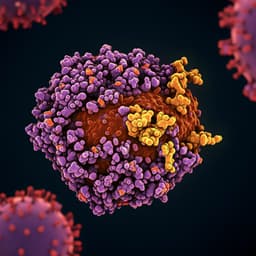
Earth Sciences
Sedimentary biomarkers of human presence and taro cultivation reveal early horticulture in Remote Oceania
G. Camperio, S. N. Ladd, et al.
This fascinating research, conducted by Giorgia Camperio, S. Nemiah Ladd, Matiu Prebble, Ronald Lloren, Elena Argiriadis, Daniel B. Nelson, Christiane Krentscher, and Nathalie Dubois, uncovers the timeline of human settlements and horticulture's inception in Remote Oceania. With sediment core analysis from Efate, Vanuatu, the study reveals that the first settlers introduced taro cultivation around 2800 years ago during a wet climate, enriching our understanding of Pacific history.
~3 min • Beginner • English
Related Publications
Explore these studies to deepen your understanding of the subject.







